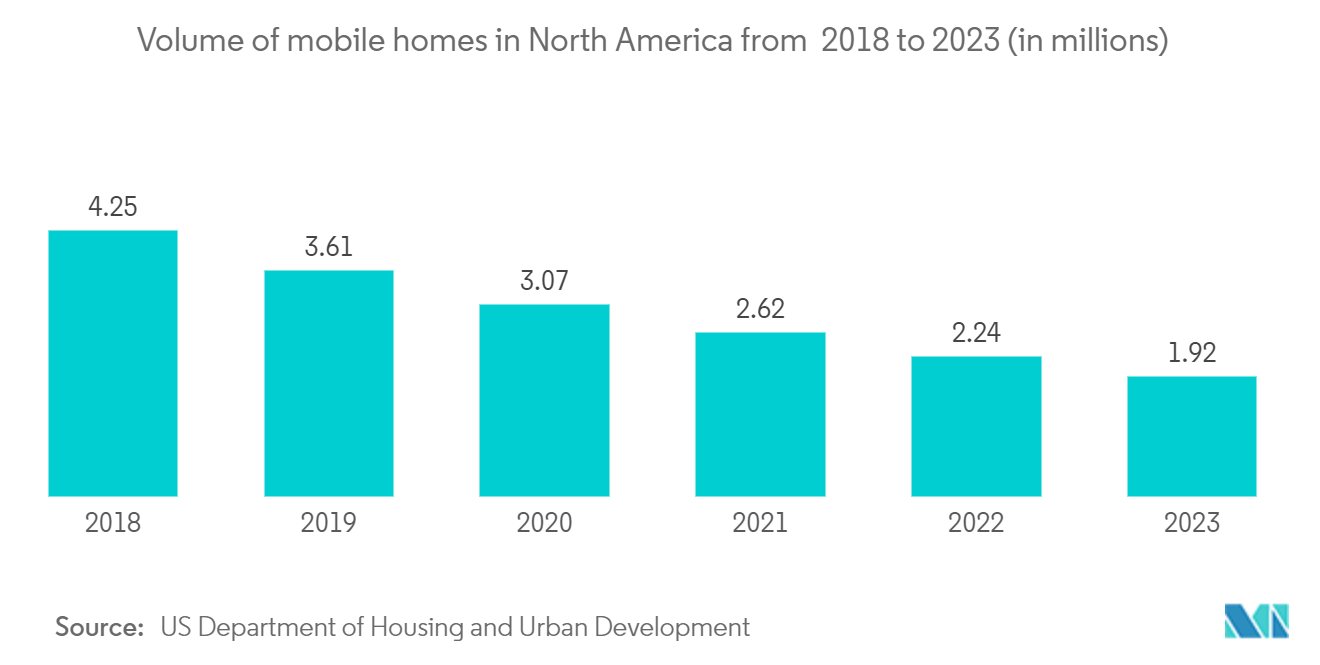Market Trends of United States Prefabricated Buildings Industry
Increased Demand for Residential Houses Driving the Market
According to a joint statement from the US Census Bureau and the US Department of Housing and Urban Development, fewer Americans are buying new houses. The seasonally adjusted annual sales of new single-family homes in July 2022 was 511,000, which was 12.6% less than the revised June rate of 585,000 and 29.6% less than the expected July 2021 of 726,000. Despite declining demand for new homes, prices have grown in July rather than decreased. The median sales price of new residences increased from USD 402,400 in June 2022, when prices fell to their lowest point in a year following a record high of USD 458,000 in April to USD 439,400 in July 2022.
A good supply is also visible in the housing inventory. At the end of July 2022, the seasonally adjusted estimate of new homes for sale was 464,000. At the current sales rate, this represents a supply of 10.9 months, meaning the current supply will run out in 10.9 months. After the Fed raised interest rates several times, the housing market experienced a rapid rise in home values, followed by a severe decline. Even the housing construction industry is slowing down, as evidenced by the decrease in new construction sales during July 2022.
According to the National Apartment Association, 4.6 million more units would be needed to meet demand by 2030. Even though this year's 490,000 new apartment listings are the largest since the Great Recession, it's still insufficient. For investors in apartment buildings, rising prices provide a fantastic opportunity. Given that rents and housing prices are rising, this is the best moment to buy. The trend will surely slow down but most likely be moderated due to recent increases in Federal funds rates, which are projected to reach 3.4% by the end of the year.

Growing Modular Construction in the Country Driving in the Market
The housing affordability issue in the United States is more pronounced than ever after two years of skyrocketing real estate prices, mortgage rates, and rents. Households in the United States have been looking for solutions to the strain caused by rising housing expenses. One option is to build more manufactured houses. Manufactured housing is defined as housing built in a factory and then transported to its ultimate location. These units are far less expensive than site-built dwellings because they typically have simple designs and cost-effective materials.
Industry insiders estimate that a manufactured home costs USD 57 on average per square foot, which is significantly cheaper than the USD 119 cost of a site-built home. This less expensive choice holds a lot of appeal for families with lower and moderate incomes. Approximately 1 in 10 new homes built in the United States each year are prefabricated, and 22 million Americans already live in them. Based on planned construction development over the next few years, non-residential construction put in place is expected to reach 590.4 billion U.S. dollars in 2023 in the United States.
The popularity of manufactured houses varies across the United States, but the South stands out for having a higher proportion of them. Fast-growing, densely populated southern states like Texas, Florida, and North Carolina take the top spot for annual shipments of prefabricated homes. However, the most popular locations for new single-family homes are in lower-income states like Mississippi, West Virginia, and Kentucky, whose residents may be more inclined to construct homes as a cheap alternative.


